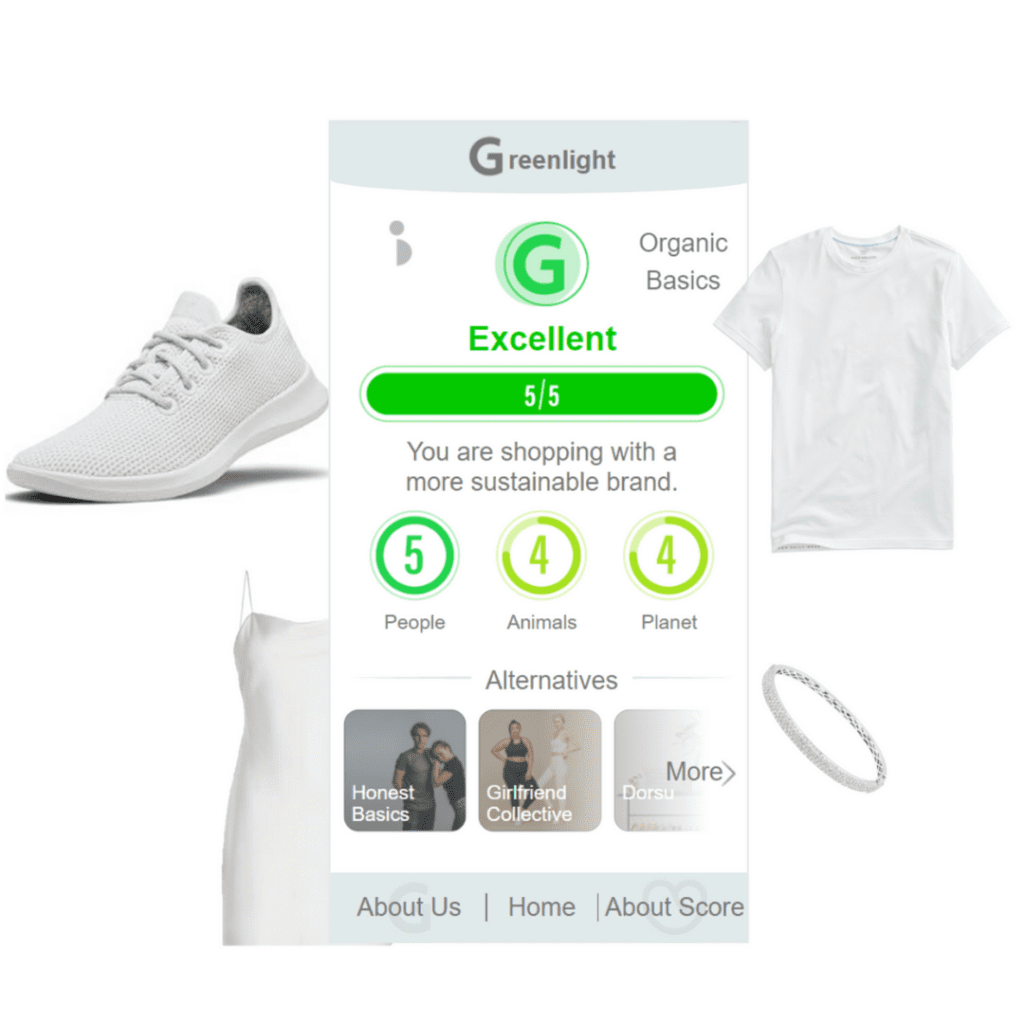It can be extremely difficult and overwhelming to begin your sustainable fashion journey. There are endless resources available, but it’s hard to know where to start and which of these resources to trust. And then on top of that, there is the issue of greenwashing, which makes it challenging to know whether or not a brand’s sustainability claims are legitimate. Thankfully, there are tools available that can help, such as Greenlight, which is a free web extension that helps consumers shop more sustainably. This tool was founded by Jacob Widgor, Julian Neuman, and Evan O’Connor, who recognized the need for transparency in brand sustainability through their own efforts to shop sustainably.
Can you tell us about your partners and why they joined/co-founded Greenlight?
Last Spring my friend Jacob was taking a course on sustainable fashion at Cornell. He learned of the fashion industry’s ills to a level of detail he previously had not been aware of. When he tried to shop sustainably himself, he encountered many difficulties, prompting the creation of Greenlight. Evan, the other co-founder, and I have been close friends of Jacob’s since high school. Between the two of us we are experienced in finance, entrepreneurship, tech, and product development, and so we were natural selections to round out the team!
How did you develop the extension?
The primitive proof of concept was initially developed by a couple of Jacob’s friends from Cornell. After joining to head product development, I took over from working on the code from them. Working with a front-end designer I was able to expand the number of brands included, update the extension’s interface to its current clean format, and include other features like notifications and alternative brands.
Your website says that Greenlight was started so that people have the information they deserve while shopping. What prompted this need for transparency?
As mentioned, the need for transparency was apparent to Jacob after his own experience attempting to shop sustainably. He was unsure where to turn to. This prompted him to reach out to a professor who had conducted her research in sustainable fashion shopping, or more accurately, a lack of sustainable fashion shopping. Speaking with her he learned how many sustainability enthusiasts are deterred from sustainable shopping by the lack of transparency, among other difficulties. This is termed the “attitude-behavior gap” and has been widely acknowledged in fashion. Greenwashing is so pervasive in the industry, consumers don’t know where to turn to see what is actually happening in their brand’s production. According to a BCG industry report, 75% of people believe fashion brand transparency is very important!
Why use Good On You’s data? Why not also use other sustainable search engines like Ethical Clothing Search Engine?
We settled on Good On You as an initial data source as it is 1) super comprehensive, 2) highly reputable, and 3) incorporates other sources in its research. Widely acknowledged as the industry leader in fashion sustainability data, with its 2,500+ brands, it was a natural starting point and we haven’t looked back. Their CEO has been super friendly throughout our work together, and we are excited to continue to build the relationship. Incorporating other information sources is something we will look to do, especially as we eventually expand from fashion to other industries!
How do you create suggestions for alternative sustainable businesses?
We create suggestions based on the category of a brand a user is viewing. For example, if a user views an unsustainable athletic wear brand, we present them with more sustainable athletic wear alternatives. This addresses a major consumer pain point: it is difficult to discover new sustainable brands.
How do you rate each brand? What are the qualities that a business must be at for each level of rating? i.e., unhappy face, neutral, happy, etc.
Our focus is on conveniently bringing brand ratings and alternatives to consumers – we leave the rating development itself to experts like the Good On You team. An overview of their rating process can be found here: https://goodonyou.eco/how-we-rate//
I noticed that some businesses you rate it, “we avoid”. Why is that?
This is due to these brands having poor sustainability ratings. For this reason, we avoid shopping at them.
Is there a margin of error when calculating a brand’s sustainability from what a brand announces and what they actually do based on your rating scale? Do you rely solely on Good On You’s data?
At this point, we rely solely on Good On You, but we hope to incorporate other sources soon.
How are you looking to expand Greenlight? What is the ultimate goal for Greenlight?
The ultimate goal for Greenlight is to be a one-stop shop for sustainable online shopping and guidance. We wish to include other industries such as food and home goods. While there is much focus on sustainable data, we are focused on seamlessly bringing it to users so they can act on it! Additionally, we hope to include user rewards and discounts for sustainable shopping. This can allow people to track their progress. We want to dispel the notion that sustainable shopping has to be more expensive!
What sources do you suggest people follow to get sustainable fashion news, like the news you post on your Instagram?
Social media is a great resource certainly! Pages on Instagram such as @thesustainablefashionforum are resources I really enjoy. Additionally, there are cool subreddits dedicated to the topic. Lastly, mainstream news sources will occasionally have very informative articles on sustainable fashion. There is no one right answer, but great information will come to anyone who seeks it!
You’re an American-made company, how does your extension translate to Canadian or other countries’ sites on popular clothing brands, i.e., Adidas Canadian website vs. American website? I’ve noticed that the app does not work on certain Canadian website versions.
Sorry to hear this! We have worked to make our extension compatible with international e-commerce sites, but of course, it is an ongoing effort. One thing, in particular, I would love is to make the extension multilingual as we have noticed the vast majority of usage is in English-speaking countries.
What are some of the most positive and negative reviews you’ve gotten?
Fortunately, we have not received any super negative reviews to think of – mostly suggestions. Many people requested the alternatives feature, which we were able to include. I think this reflects the congenial nature of the sustainability community! It is a bit self-selective as no one would take the time to use our extension and speak to us, solely to disparage it.
As for positive reviews, I am happy to say we have received many. One user said, “I absolutely love the idea, it’s so easy and everything is at the fingertips [sic], my favorite part is the score breakdown, let’s you make your own informed decision.” Another said (following the inclusion of the alternatives feature), “The extension is awesome and I’m super impressed! I think what I like the best about it is that it shows similar brands with better sustainability ratings as alternatives to the not-so-great ones that I’m used to buying from!”
Greenlight aims to help people become better sustainable consumers by promoting sustainable learning through its website’s blog. For more information, explore their resources here.


